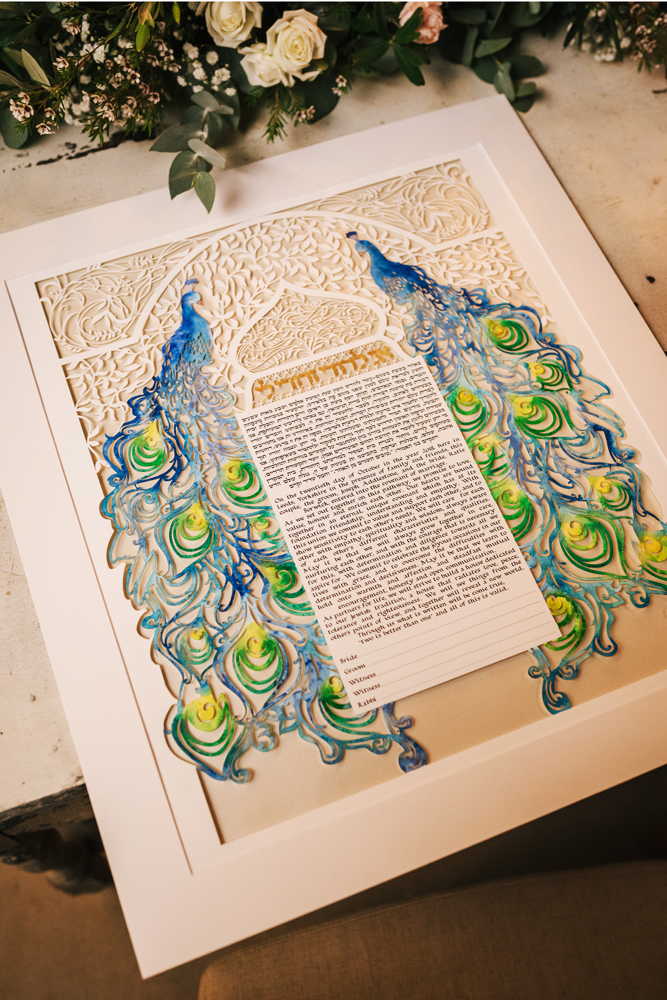
Unveiling the Ketubah: A Closer Look at Its Components
This guide serves to demystify the Jewish marriage contract, known as the Ketubah, by giving a detailed breakdown of its components. We'll explore the historical, legal, and artistic aspects of this significant document, which plays an integral role in Jewish matrimony. The guide will provide a comprehensive understanding of the Ketubah's significance, its language, and its depiction in art.
1. The Origin of the Ketubah: How far back does it go?
The history of the Ketubah dates back thousands of years, tracing its origins to ancient Jewish tradition.
**Ancient Roots**: The Ketubah, meaning "document" or "written thing" in Hebrew, has been a fundamental part of Jewish weddings since biblical times. Its roots can be found in the Torah, where the concept of a marriage contract is mentioned as a means of protecting the rights of the wife.
**Biblical Precedence**: In ancient Jewish communities, the Ketubah served as a legal document outlining the husband's responsibilities towards his wife, including providing for her financial needs and ensuring her well-being. It was a revolutionary concept at the time, establishing the wife's rights within the marriage contract.
**Cultural Significance**: Over the centuries, the Ketubah has evolved to reflect the cultural practices and values of Jewish communities around the world. Despite variations in language and content, the essence of the Ketubah remains consistent – a binding agreement affirming the commitment and responsibilities of both partners in a marriage.
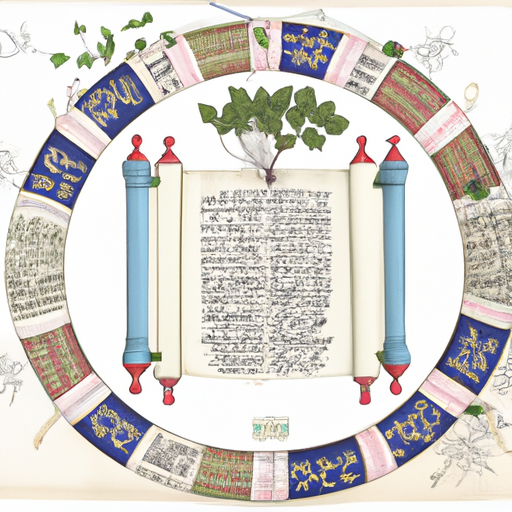
1. An illustration of an ancient Ketubah, showcasing its historical roots.
2. The Legal Language of Love: What does the Ketubah really say?
The Ketubah serves as a legal document outlining the rights and responsibilities of both partners in a Jewish marriage. It contains specific provisions related to financial support, conjugal rights, and obligations towards each other.
**Binding Agreement**: The Ketubah is a binding contract that is signed by witnesses and holds legal weight within Jewish law. It is designed to protect the interests of both the husband and wife, ensuring that they fulfill their duties and obligations towards each other.
**Mutual Commitment**: The language of the Ketubah reflects the mutual commitment of the couple to each other, emphasizing the importance of love, respect, and partnership in marriage. The Ketubah outlines the husband's promise to provide for his wife and honor her needs, while the wife agrees to maintain a harmonious and supportive relationship.
**Historical Context**: The language used in the Ketubah has historical significance, drawing upon centuries-old traditions and customs. It is a testament to the enduring values of marriage within the Jewish faith, emphasizing the importance of mutual respect, trust, and understanding between partners.
**Symbol of Unity**: Ultimately, the Ketubah serves as a symbol of unity and partnership, encapsulating the shared values and commitments of the couple as they embark on their journey together.
3. 'The Ketubah is to a Jewish Wedding what a Canvas is to a Painter': The Artistic Perspective
The Ketubah is often likened to a canvas for a painter, serving as a unique and personalized expression of the couple's love and commitment.
**Artistic Design**: Just as a painter carefully selects colors, textures, and techniques to create a masterpiece, couples have the opportunity to choose the design, layout, and artwork for their Ketubah. From intricate calligraphy to beautiful illustrations, the Ketubah becomes a visual representation of the couple's relationship and shared values.
**Customization**: Like a painter adding personal touches to their canvas, couples can customize their Ketubah to reflect their individual personalities and preferences. Whether incorporating symbols of faith, meaningful quotes, or personal anecdotes, the artistic elements of the Ketubah allow for a truly one-of-a-kind creation.
**Symbolism and Imagery**: Much like the symbolism found in a painting, the imagery within the Ketubah holds deep significance. From traditional Jewish motifs to modern interpretations, each element included in the Ketubah contributes to the overall narrative of the couple's love story. The artistic perspective of the Ketubah emphasizes the beauty and creativity that can be infused into this sacred document, elevating it from a mere contract to a work of art that captures the essence of the couple's union.
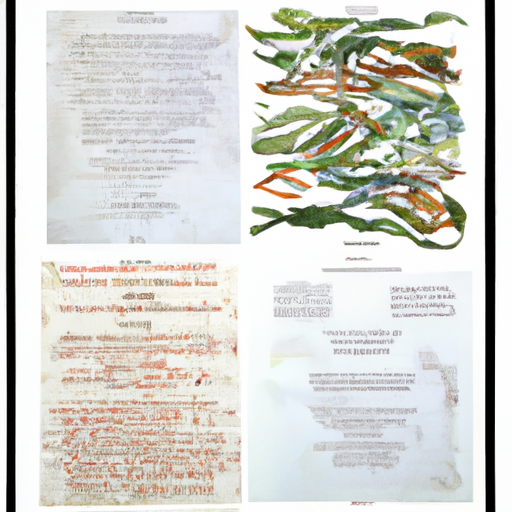
3. A montage of different artistic interpretations of Ketubahs, highlighting their aesthetic diversity.
4. The Personalized Ketubah: How is it a reflection of the couple?
The Personalized Ketubah serves as a profound reflection of the couple, encapsulating their unique bond, shared values, and individual identities.
**Customized Text**: The words chosen for the Ketubah, whether traditional or modern, speak to the couple's beliefs, promises, and aspirations for their life together.
**Incorporating Personal Details**: From the inclusion of names, dates, and locations to personal anecdotes and shared memories, the Ketubah becomes a narrative of the couple's journey leading up to their union.
**Symbolic Elements**: By incorporating symbols that hold personal significance, such as cultural references, family crests, or elements from nature, the Ketubah becomes a tapestry of the couple's collective experiences.
**Color and Design Choices**: The colors, fonts, and layout chosen for the Ketubah can reflect the couple's aesthetic preferences, creating a visual representation of their style and taste. The Personalized Ketubah goes beyond a standard template, allowing couples to infuse their personalities and love story into every aspect of the document. This unique and intimate touch transforms the Ketubah from a legal document into a cherished keepsake that symbolizes the depth of their commitment and the beauty of their partnership.
5. Ketubah through the Ages: How has it evolved over time?
The Ketubah, a sacred marriage contract with roots dating back thousands of years, has undergone significant evolution throughout history. Originally a document primarily focused on financial obligations and property rights, the Ketubah has evolved to encompass a broader range of commitments and values. In ancient times, the Ketubah served as a form of protection for the wife, ensuring she would be provided for in the event of divorce or her husband's passing. Over the centuries, the language and content of the Ketubah have adapted to reflect changing societal norms and values. While traditional Ketubot were often written in Aramaic, contemporary versions may be written in the vernacular language of the couple or include translations for broader accessibility. The evolution of the Ketubah reflects the shifting roles and dynamics within marriages and serves as a testament to the enduring relevance of this sacred union document. As society has progressed, the Ketubah has transformed into a symbol of love, respect, and partnership, emphasizing the emotional and spiritual aspects of marriage in addition to the practical considerations of the past. Today, couples have the freedom to customize their Ketubah to reflect their unique relationship and values, ensuring that this ancient tradition remains a meaningful and personal expression of their commitment.
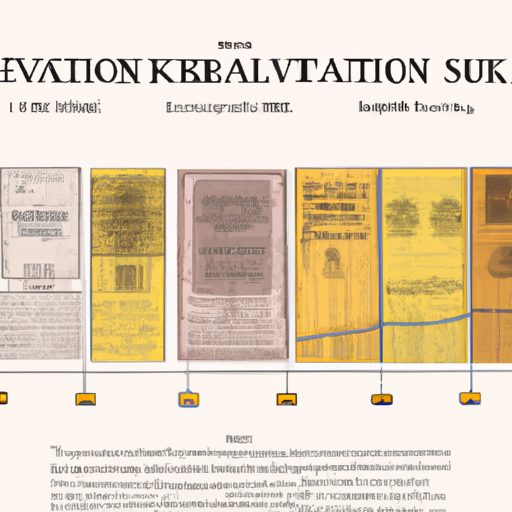
5. A timeline graphic showing the evolution of the Ketubah over centuries.
6. 'The marriage contract is not merely about obligations, it's about commitment': The Spiritual Significance
The marriage contract is not merely about obligations, it's about commitment. It serves as a sacred covenant between two individuals, symbolizing their dedication to each other and to their shared life together. In Jewish tradition, the Ketubah is considered a spiritually binding agreement, rooted in faith and love. It is more than a legal document; it is a testament to the couple's spiritual connection and their intention to build a life based on mutual respect and support. The act of signing the Ketubah is a profound and symbolic moment, where the couple publicly declares their commitment to each other before their loved ones and the divine. This spiritual significance infuses the Ketubah with a sense of sanctity and reverence, elevating it beyond a mere contract to a sacred vow that transcends the material world. The Ketubah serves as a reminder of the spiritual bond that unites the couple, guiding them in times of joy and challenge, and anchoring their relationship in shared values and beliefs.
7. The Signing Ceremony: What happens when the pen meets the parchment?
The Signing Ceremony is a pivotal moment in a Jewish wedding, where the Ketubah comes to life as the pen meets the parchment. It is a symbolic act that signifies the formal agreement between the couple, their families, and their community. As the witnesses sign the Ketubah, they bear witness to the union of two souls embarking on a shared journey. The act of signing the Ketubah is not merely a formality; it is a sacred ritual that seals the couple's commitment to each other. The strokes of the pen on the parchment carry the weight of tradition, love, and responsibility, binding the couple in a bond that transcends the physical world. The Signing Ceremony is a moment of unity and celebration, where the couple affirms their love and dedication before their loved ones and the divine. The Ketubah, once signed, becomes a tangible symbol of the promises made, a testament to the enduring nature of their relationship. It is a reminder of the vows spoken, the love shared, and the future envisioned together.
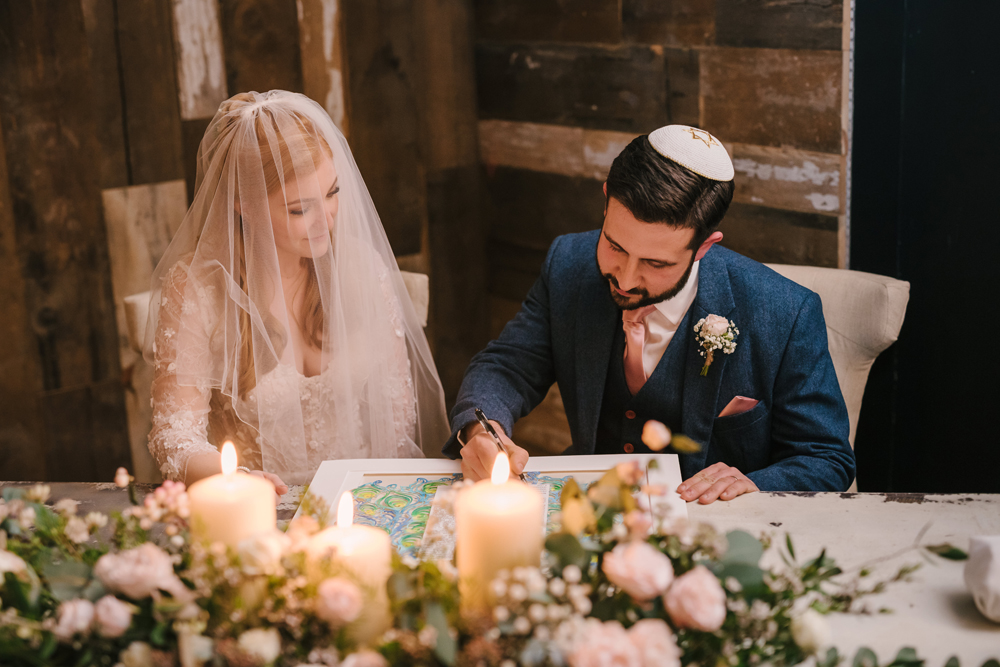
7. A photo capturing the moment of the Ketubah signing, with the bride, groom, and witnesses visible.
The Ketubah, steeped in tradition and symbolism, remains a cornerstone of Jewish weddings. Beyond its legal implications, it represents the deep commitment and responsibility shared by the couple. Understanding its components not only provides a deeper connection to Jewish culture and history but also enhances the appreciation of its profound significance.
https://noaattias.com/